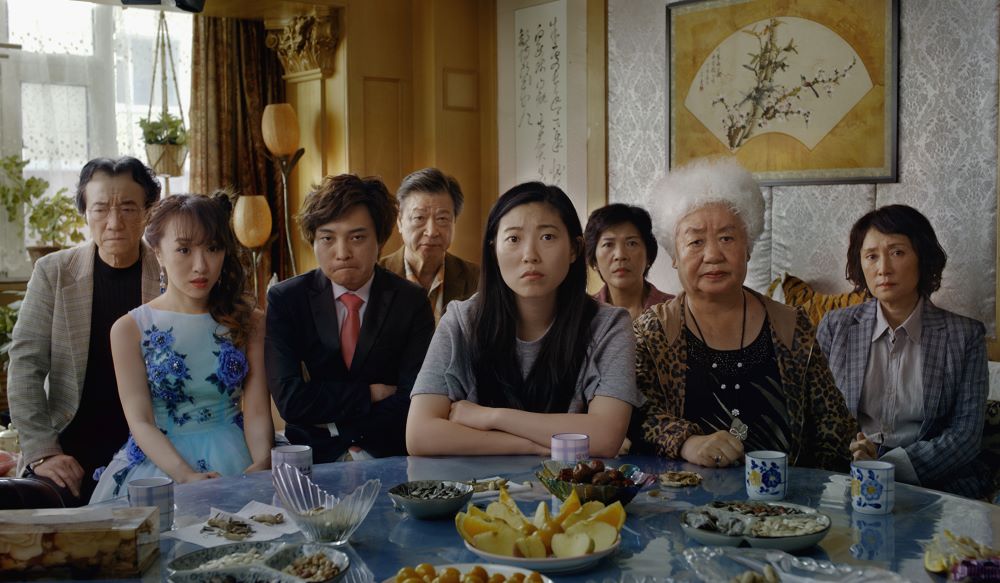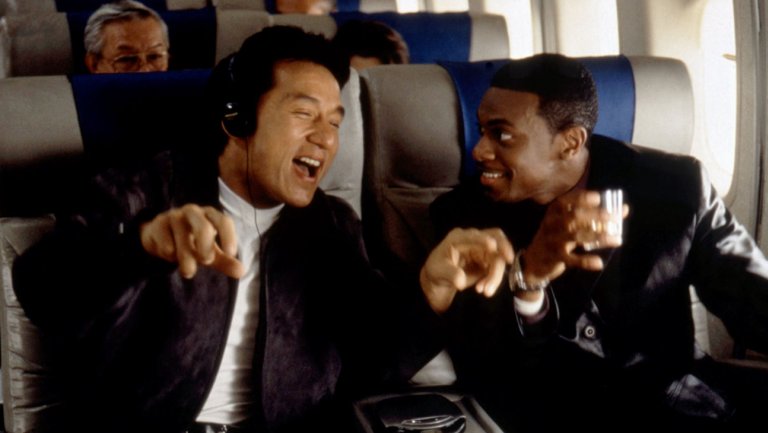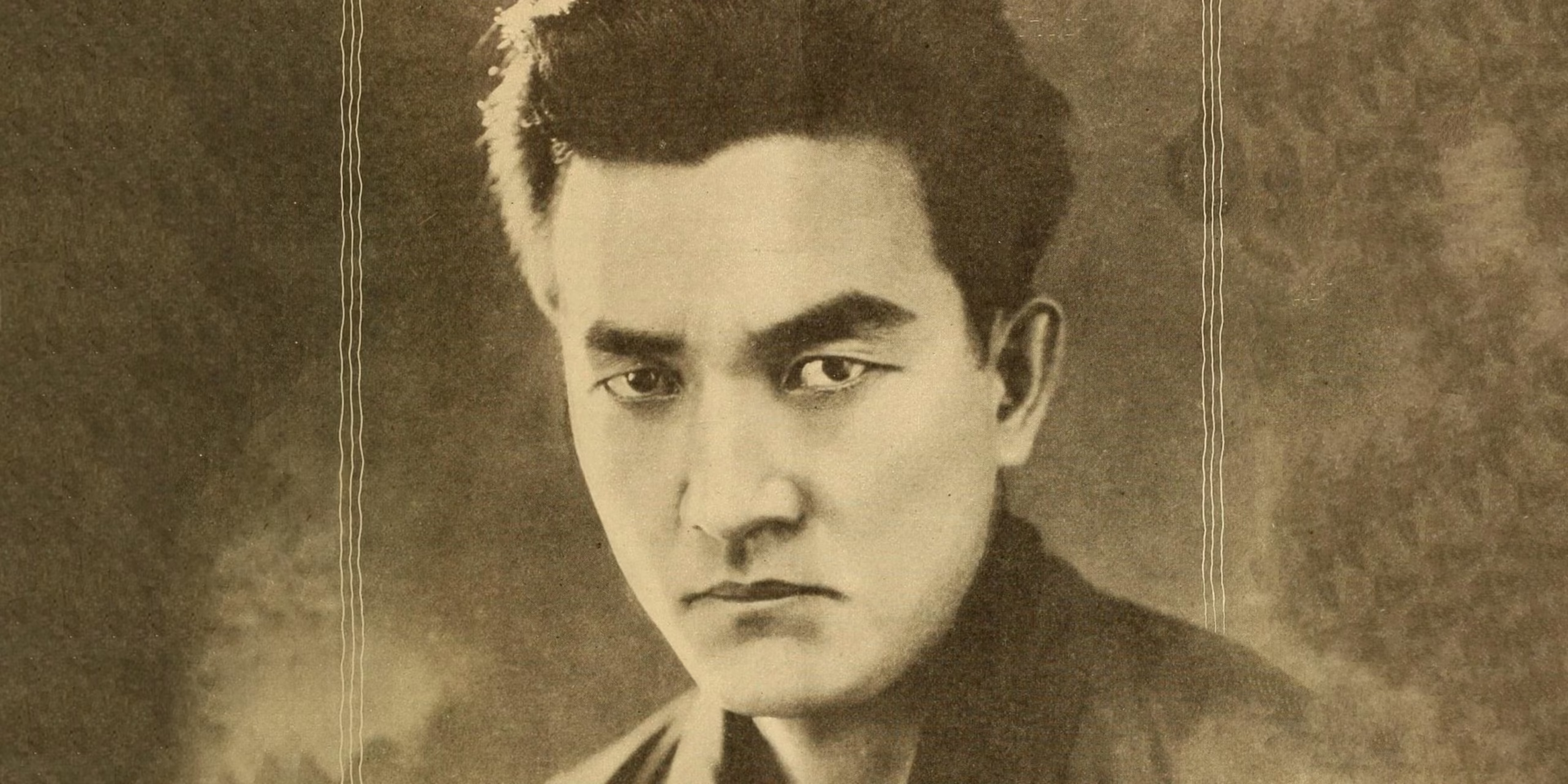For decades, Asian and Asian American faces on screen have been exoticized, sidelined, or erased entirely. But a new report by The Asian American Foundation (TAAF) is making it clear: continuing to ignore these stories isn’t just bad representation — it’s bad business.
According to TAAF’s 2025 ‘Business Case for Asian and Asian American Narratives’, Hollywood’s old excuses —”Asian American stories are too niche, with very small audience appeal and not much earning potential,” and “Asian Americans are not bankable stars” — are no longer true. In fact, the data says the opposite.
Representation Is Still at Rock Bottom
Despite a recent surge in hits like Beef, Never Have I Ever, and Everything Everywhere All At Once, Asian Americans remain the most underrepresented group in Hollywood. Just 6% of Asian characters in top productions are in leading roles. On streaming, that number drops to 3.2%.
It’s not just about being unseen — it’s about being unseen accurately. Only a third of Asian characters ever interact with another Asian person on screen, and less than half even have Asian names. As TAAF’s STAATUS Index confirms, this cultural erasure feeds real-world harm — from low self-esteem among youth to rising anti-Asian hate.
The Commercial Case for Change
The report breaks down what every studio exec should already know:
-
$1.3 trillion — that’s Asian Americans’ collective buying power.
-
81% of Asian Americans stream TV — more than any other group.
-
Asian-led films outperform expectations: Shang-Chi saw Asian audiences make up nearly one-fifth of its box office.
-
Diverse casts drive higher ratings and revenues. Films with 31–40% nonwhite casts had the highest median box office returns in 2022.
| Film/Series | Box Office / Streaming Success |
| Crazy Rich Asians | $239M box office |
| Everything Everywhere All At Once | $143M global, 11 Oscar noms, 7 wins |
| Turning Red | Over 200M streaming hours, 1.7B mins/week, major Hispanic viewership |
| Beef | No. 1 Nielsen streaming, 8 Emmys |
| Always Be My Maybe | 15.9M viewers, Hispanic viewer crossover |
| Quiz Lady | Top 5 streamed film on debut |
| To All the Boys I’ve Loved Before | 70% global viewership |
| Never Have I Ever | Multi-season run, loyal Asian and Hispanic viewership |
Hollywood’s math is simple: inclusivity equals profitability. Or as one senior executive told TAAF, “Change happens when there’s a market signal loud enough to override fear of failure.”
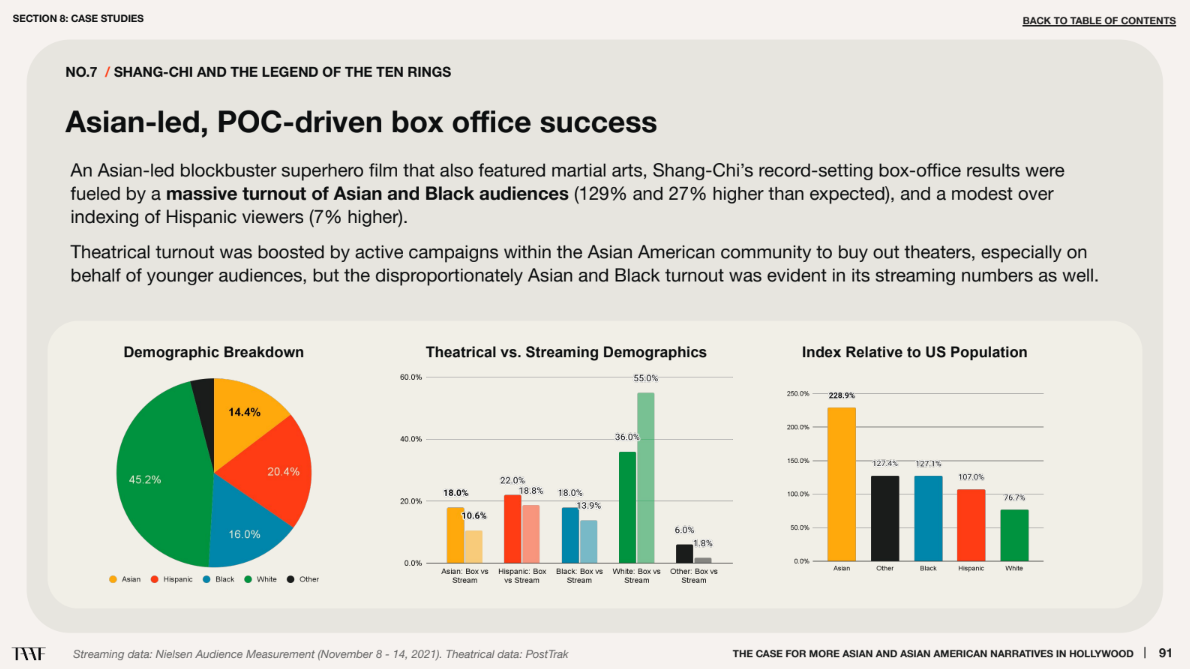
From “Model Minority” to Main Character Energy
TAAF argues that the next generation of Asian storytelling isn’t about identity politics — it’s about creative opportunity.
The report urges creators to move beyond trauma and tell stories that embrace joy, contradiction, and absurdity. It’s time for Asian American characters to be heroes, antiheroes, rebels, lovers — and yes, villains too.
Read more: K-Culture’s Paradox: Why Netflix is Winning the Global Race, but Korea’s Film Industry is Starving
Hollywood has a wide-open lane to create new icons. In a world where 42% of Americans can’t name a single famous Asian American, that’s not an identity crisis — it’s a market gap.
A Wake-Up Call for Gatekeepers
The 2025 report doesn’t just diagnose Hollywood’s diversity fatigue — it provides a roadmap. From concept to casting, from pitching to marketing, TAAF outlines actionable ways studios can move the needle without relying on tokenism or “diversity washing.”
It’s a call to arms — and a reminder that storytelling has consequences. As The Black List founder Franklin Leonard told TAAF,
“The stories we choose to tell determine who is seen as having value. Hollywood loves to call itself the most influential business in the world. If that’s true — it’s time to take responsibility.”
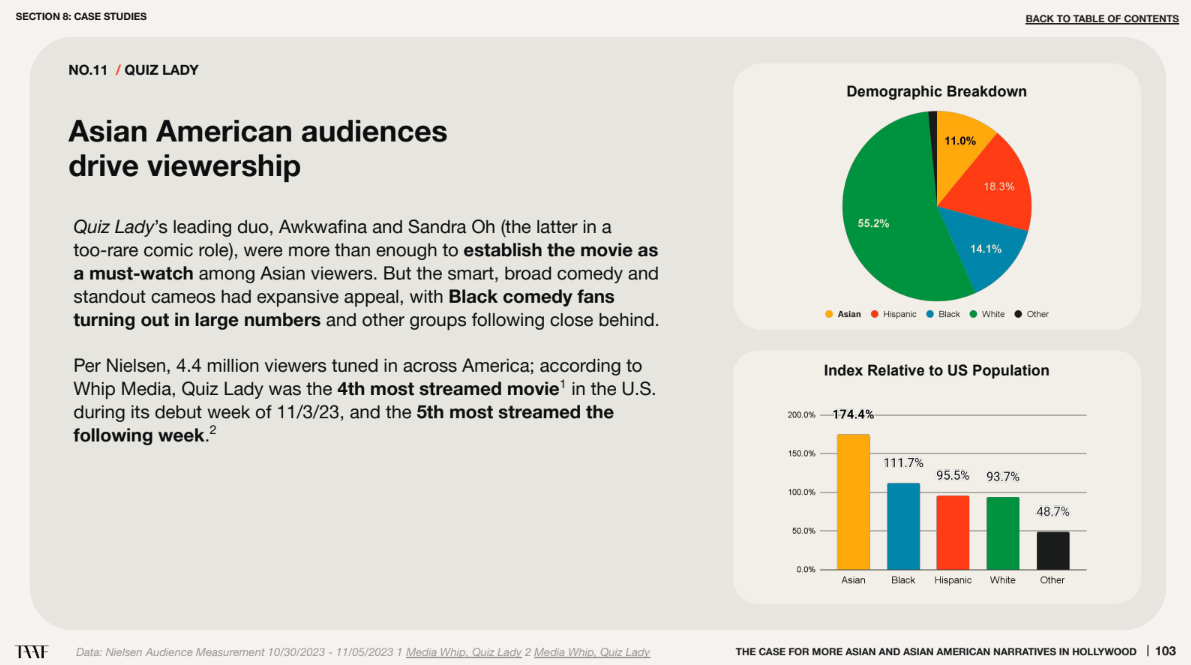
Asian American narratives aren’t “too niche.” They’re the next mainstream.
And if Hollywood won’t evolve for the sake of representation — it should at least do it for the bottom line.

